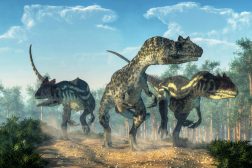Definition
noun, plural: flukes
(1) (ichthyology) Summer flounder, Paralichthys dentatus (a flatfish)
(2) (cetology) Either of the two lobes of the tail of a cetacean, e.g. whales and dolphins
(3) (parasitology) A common name for any of the parasitic flatworms of Class Trematoda of Phylum Platyhelminthes; trematode
Supplement
In ichthyology, a fluke refers to Paralichthys dentatus , which is also commonly called summer flounder. The species belongs to the family Paralichthyidae of class Actinopterygii, phylum Chordata. The species is characterized by having eye-like spots on the body (about 5-14), ability to change color and pattern of the dark side to match surroundings, burrowing in sandy bottoms, sharp teeth, and active predators of sand lance, porgies, squid, shrimp, etc. These flounders are typically found in the Atlantic Ocean.
In cetology, a fluke is an anatomical part of whales and dolphins. In particular, the fluke pertains to either of the two lobes of the tail of whales and dolphins. The flukes are used for propulsion.
In parasitology, a fluke is a common name given to parasitic flatworms of the class Trematoda (trematodes). This taxonomic class of phylum Platyhelminthes (flatworms) is characterized by having external suckers that they use to anchor themselves within their host. There are two groups: tissue flukes and blood flukes. The members of these two groups are classified based on the system of the host that they infest (or infect). The tissue flukes, e.g. Paragonimus westermani, Fasciola hepatica, and Clonorchis sinensis, are those that are found in lungs, bile ducts, and other tissues of their hosts. The blood flukes, e.g. Schistosoma, are those that occur in the blood of their vertebrate host. Humans may also serve as a host to certain trematodes, such as Schistosoma, Clonorchis, Opisthorchis, Fasciola, and Paragonimus species.
Dictionary > Fluke
You will also like...

Insects
There are more species of insects than any other species combined. This surely illustrates that insects have the selecti..

The Dinosaurs
Dinosaurs represented a major turn in the evolutionary development of organisms on Earth. The first dinosaurs were presu..

Digestion and Absorption of Food
The gastrointestinal system breaks down particles of ingested food into molecular forms by enzymes through digestion and..

Still Water Animals
Animals living in aquatic habitats have diversified and evolved through time. They eventually occupy ecological niches a..

Origins of Life on Earth
Earth was created around 4.5 billion years ago and life began not long after. Primitive life likely possessed the elemen..

Control of Growth & Development
Control of Growth & Development tutorials look at how the genetic makeup determines the biological processes on a da..

